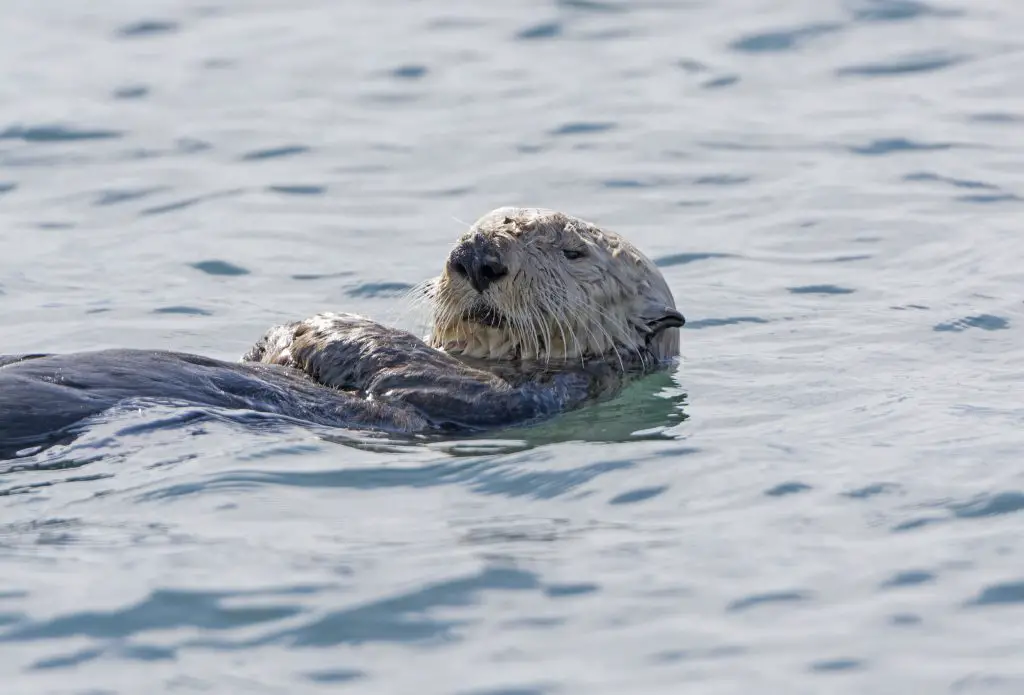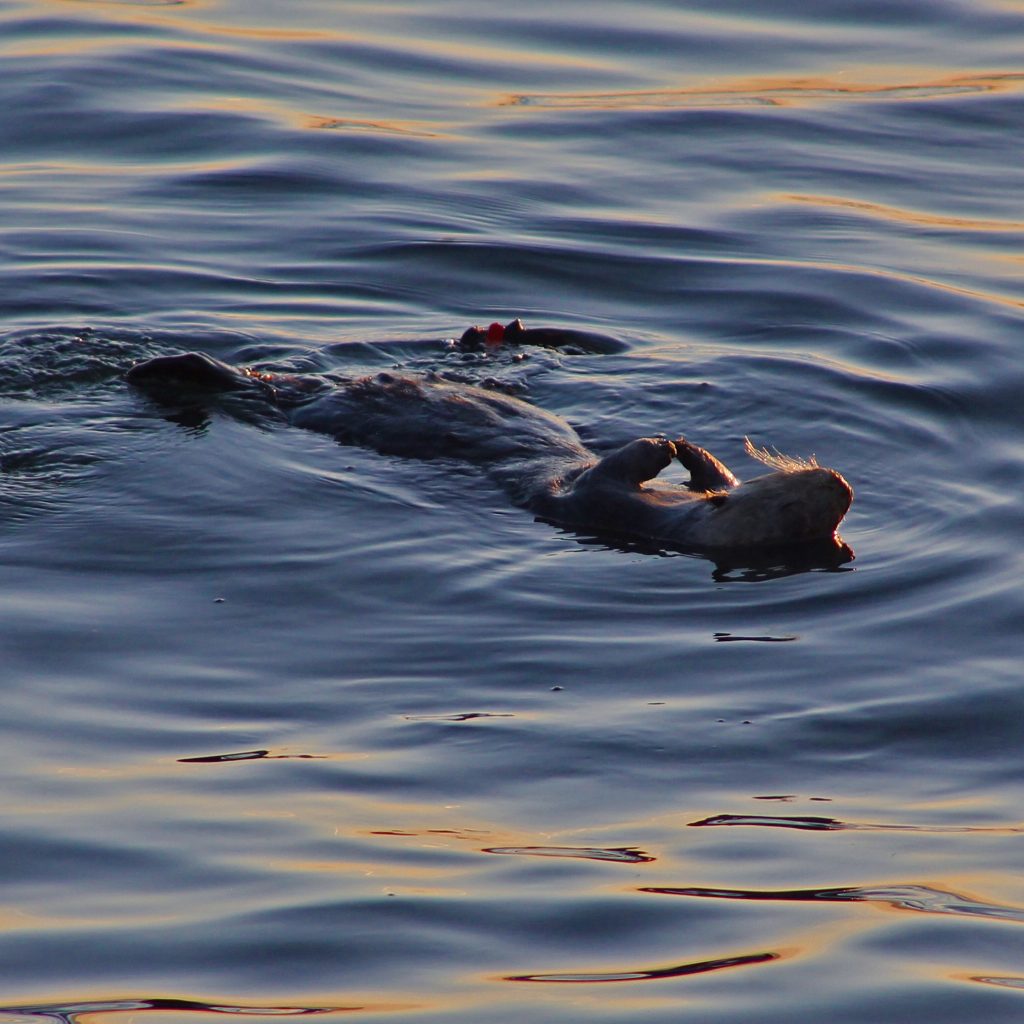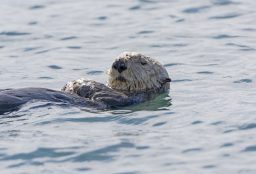Otters are keen swimmers – and many otter species live and feed in the ocean. Two such species (the Sea Otter and the Marine Otter) made it their full time home.

How Do Otters Live In The Ocean?
Most Otters (and there are 13 species around the world) can be found along the coast – swimming in marine environments. Only 3 of these rarely ever go in the ocean – but all the others can be seen swimming out to sea in a variety of different habitats.
From rocky coasts to sandy shores – as long as there is freshwater close by for grooming – they can stay on the beach as long as they need to.
The ocean isn’t an easy place to live though so otters need to be able to cope with the salty conditions as well as the tides. And they need to stay warm. Unlike other marine mammals – otters don’t have a layer of blubber to keep them warm – they can only use their thick coats. With some of the densest coats of any mammal – otters trap air in their fur and stay warm that way. It calls for a lot of grooming indeed to maintain this protective layer.
Sea Otters are often seen overgrooming their coats. They can often be seen scratching at their coat – which helps to trap air in the thick layers. They are also seen rubbing their coats flat with their dextrous front paws – a process that removes water from the fur very effectively.
They have very stretchy skin too and a flexible skeleton to help with all-over grooming. Seeing as they spend almost all their lives in water – they have to be able to stay warm and dry on the move.
Are All Ocean-Living Otters Called Sea Otters?
There are only one true species called a Sea Otter by name (Enhydra lutris) – all the other otters seen in the ocean might be called a ‘sea otter’ but are in fact other species such as the Marine Otter (Lontra felina), Eurasian Otter (Lutra lutra) or the Smooth-coated Otter (Lutrogale perspicillata).
Sea Otters are the only otter species that can live 100% salt-water – in the ocean. They hardly ever need to come on land and certainly don’t venture into freshwater environments – a mainstay for all but one of the other otters (the Marine Otter favors the ocean – but isn’t exclusively marine). They are also the heaviest otter species – reaching over 90lbs in the largest individuals.
So, unless you are along the North Pacific coastline in the U.S, Japan, or Russia – it isn’t a true Sea Otter.

What Do Sea Otters Eat?
Unlike most river-dwelling otters – Sea Otters don’t really eat fish. They tend to focus on echinoderms (urchins), crustaceans, and mollusks – collecting snails, clams, crabs, and mussels from the seabed and cracking them open on their tummies back at the surface.
Sea Otters are totally buoyant, and float on their backs in the water when feeding – using the useful front feet for handling the food and their back feet and tail for stability.
Otters are also one of only a few mammals in the world that use tools to crack open their food. Using stones collected from the seafloor, they will hammer at their prey on their tummies to crack open shells. They also use similar tools to dislodge mollusks from their rocky homes – bashing abalone shells for example over and over until they are dislodged.
Sea Otters are also called a ‘keystone species’ because their habits and diet can change the very environment they live in. By eating sea urchins, they keep the kelp beds that sustain all the other animals in that rich habitat as well as protect the coastline from flooding and storm surges. Remove the otters (as had happened in many over-developed areas) and the urchins destroy all the kelp and degrade the coast itself – as well as destroying its valuable underwater environment.
Put the otters back – and it gradually returns.
Are Sea Otters Dangerous?
They can be. They are large carnivores – and so you would be foolish to underestimate them and intrude on their habitat. They won’t necessarily attack every human that enters the water, but they have been known to attack people on land and in the water – usually in captivity though.
Adult Sea Otters can be over 1.5 meters long, are very agile, and have a hugely powerful bite. Something you don’t want to get too close to – especially when they have pups – or when they have been spooked.
Keep your distance.










